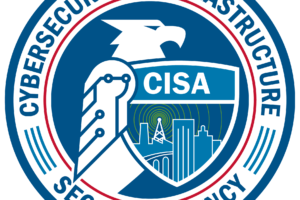CISA and Partners Release Advisory on Iran-based Cyber Actors Enabling Ransomware Attacks on US Organizations




The United Kingdom’s National Cyber Security Centre (NCSC-UK), the United States’ Cybersecurity and Infrastructure Security Agency (CISA), National Security Agency (NSA), and Federal Bureau of Investigation (FBI), New Zealand’s National Cyber Security Centre (NCSC-NZ), Canadian Centre for Cyber Security (CCCS), and the Australian Signals Directorate (ASD) published a joint Malware Analysis Report (MAR), on Infamous Chisel a new mobile malware targeting Android devices with capabilities to enable unauthorized access to compromised devices, scan files, monitor traffic, and periodically steal sensitive information.
Infamous Chisel mobile malware has been used in a malware campaign targeting Android devices in use by the Ukrainian military.
Infamous Chisel is a collection of components targeting Android devices and is attributed to Sandworm, the Russian Main Intelligence Directorate’s (GRU’s) Main Centre for Special Technologies, GTsST. The malware’s capability includes network monitoring, traffic collection, network backdoor access via The Onion Router (Tor) and Secure Shell (SSH), network scanning and Secure Copy Protocol (SCP) file transfer.
The authoring organizations urge users, network defenders, and stakeholders to review the malware analysis report for indicators of compromise (IOCs) and detection rules and signatures to determine system compromise. For more information about malware, see CISA’s Malware, Phishing, and Ransomware page. The joint MAR can also be read in full on the NCSC-UK website. Associated files relating to this report can also be accessed via the NCSC's Malware Analysis Reports page.

The Cybersecurity and Infrastructure Security Agency (CISA) and Federal Bureau of Investigation (FBI) released a joint Cybersecurity Advisory (CSA), Identification and Disruption of QakBot Infrastructure, to help organizations detect and protect against newly identified QakBot-related activity and malware. QakBot—also known as Qbot, Quackbot, Pinkslipbot, and TA570—is responsible for thousands of malware infections globally.
Originally used as a banking trojan to steal banking credentials for account compromise, QakBot—in most cases—was delivered via phishing campaigns containing malicious attachments or links to download the malware, which would reside in memory once on the victim network. QakBot has since grown to deploy multiple types of malware, trojans, and highly-destructive ransomware variants targeting the United States and other global infrastructures, including the Election Infrastructure Subsector, Financial Services, Emergency Services, and Commercial Facilities Sectors.
CISA and FBI urge organizations to implement the recommendations contained within the joint CSA to reduce the likelihood of QakBot-related activity and promote identification of QakBot-facilitated ransomware and malware infections.

The Cybersecurity and Infrastructure Security Agency (CISA), National Security Agency (NSA) and National Institute of Standards and Technology (NIST) released a joint factsheet, Quantum-Readiness: Migration to Post-Quantum Cryptography (PQC), to inform organizations—especially those that support Critical Infrastructure—of the impacts of quantum capabilities, and to encourage the early planning for migration to post-quantum cryptographic standards by developing a Quantum-Readiness Roadmap.
CISA, NSA, and NIST urge organizations to review the joint factsheet and to begin preparing now by creating quantum-readiness roadmaps, conducting inventories, applying risk assessments and analysis, and engaging vendors. For more information and resources related to CISA’s PQC work, visit Post-Quantum Cryptography Initiative.
The Cybersecurity and Infrastructure Security Agency (CISA), Federal Bureau of Investigations (FBI), the Multi-State Information Sharing and Analysis Center (MS-ISAC), and the Canadian Centre for Cyber Security (CCCS) released a joint Cybersecurity Advisory (CSA), Increased Truebot Activity Infects U.S. and Canada Based Networks, to help organizations detect and protect against newly identified Truebot malware variants. Based on confirmation from open-source reporting and analytical findings of Truebot variants, the four organizations assess cyber threat actors leveraged the malware through phishing campaigns containing malicious redirect hyperlinks.
Additionally, newer versions of Truebot malware allow malicious actors to gain initial access by exploiting a known vulnerability with Netwrix Auditor application (CVE-2022-31199). As recently as May 2023, cyber threat actors used this common vulnerability and exposure to deliver new Truebot malware variants and to collect and exfiltrate information against organizations in the U.S. and Canada.
CISA, FBI, MS-ISAC, and the CCCS encourage all organizations to review this joint advisory and implement the recommended mitigations contained therein—including applying patches to CVE-2022-31199, to reduce the likelihood and impact of Truebot activity, as well as other ransomware related incidents.

Cybersecurity & Infrastructure Security Agency (CISA) has published a blog and webpage on the CyberSentry program, a CISA-managed threat detection and monitoring capability with critical infrastructure partners that operate significant networks supporting National Critical Functions (NCFs): cisa.gov/CyberSentry
The CyberSentry program enables our agency to proactively hunt for malicious cyber activity, advise on mitigation strategies, and provide critical infrastructure partners with recommendations for improving overall network and control system security. The new CyberSentry webpage includes an informational video about the program, a fact sheet and details on how to contact CISA CyberSentry program.
Critical infrastructure organizations are experiencing network intrusions at an increasing frequency. To enhance detection of threats, CISA operates CyberSentry, which is a voluntary, proactive program that leverages its capabilities and partners with a select number of critical infrastructure organizations.
CyberSentry technology supports sensing and monitoring for information technology (IT) and operational technology (OT) networks. CyberSentry has added significant value to both CISA’s national mission and to our partners’ enterprise cybersecurity efforts.
Recent successes include:
- Infected OT Equipment: CyberSentry discovered an infection on a partner’s Human Machine Interface (HMI) equipment that had not been properly patched and secured. CISA analysts quickly notified the partner about the issue and offered guidance on preventive techniques for the future.
- Unintentional Exposure: CyberSentry tools spotted cleartext authentication occurring on a partner’s network, and further investigation revealed that a misconfiguration had caused the issue. A detailed report was provided to the partner, including specific guidance on remediating the situation.
- Private Sector Coordination: During the Colonial Pipeline disruption, CISA analysts coordinated closely with its pipeline partners to share information and monitor for adversary activity.
- SolarWinds Response: CyberSentry data helped to quickly identify partners affected by the SolarWinds supply chain compromise. All impacted partners were notified, and the program worked closely and expediently with these partners to confirm remediation of the threat.
- Identification of Malicious Activity: On multiple occasions, CISA analysts identified possible malicious activity at partner sites and worked with affected partners to identify the root causes of activity.
- Malware Discovery: CyberSentry tools quickly discovered and identified malware in a partner’s IT network. Working with the partner, CISA analysts were able to locate the infected device so the partner could remove it from the network and verify that the threat was contained.
- Attacker Exfiltration Detected: CyberSentry discovered that an attacker was actively exfiltrating information. CyberSentry worked with the partner to identify information that had been exfiltrated. After conferring with CyberSentry analysts, the partner was able to isolate infected systems that same evening, eliminating the threat.

The Cybersecurity & Infrastructure Security Agency (CISA), Federal Bureau of Investigation (FBI), the National Security Agency (NSA), Multi-State Information Sharing and Analysis Center (MS-ISAC), and the Israel National Cyber Directorate (INCD) released the Guide to Securing Remote Access Software. This new joint guide is the result of a collaborative effort to provide an overview of legitimate uses of remote access software, as well as common exploitations and associated tactics, techniques, and procedures (TTPs), and how to detect and defend against malicious actors abusing this software.
Remote access software provides organizations with a broad array of capabilities to maintain and improve information technology (IT), operational technology (OT), and industrial control system (ICS) services; however, malicious actors often exploit this software for easy and broad access to victim systems.
CISA encourages organizations to review this joint guide for recommendations and best practices to implement in alignment with their specific cybersecurity requirements to better detect and defend against exploitation. Additionally, please refer to the additional information below on guidance for MSPs and small- and mid-sized businesses and on malicious use of remote monitoring and management software in using remote software and implementing mitigations.

The Cybersecurity & Infrastructure Security Agency (CISA) and FBI released a joint Cybersecurity Advisory (CSA) CL0P Ransomware Gang Exploits MOVEit Vulnerability in response to a recent vulnerability exploitation attributed to CL0P Ransomware Gang. This [joint guide] provides indicators of compromise (IOCs) and tactics, techniques, and procedures (TTPs) identified through FBI investigations as recently as May this year. Additionally, it provides immediate actions to help reduce the impact of CL0P ransomware.
The CL0P Ransomware Gang, also known as TA505, reportedly began exploiting a previously unknown SQL injection vulnerability in Progress Software's managed file transfer (MFT) solution known as MOVEit Transfer. Internet- facing MOVEit Transfer web applications were infected with a web shell named LEMURLOOT, which was then used to steal data from underlying MOVEit Transfer databases.
CISA and FBI encourage information technology (IT) network defenders to review the MOVEit Transfer Advisory and implement the recommended mitigations to reduce the risk of compromise. This joint CSA is part of an ongoing #StopRansomware effort to publish advisories for network defenders that detail various ransomware variants and ransomware threat actors. These #StopRansomware advisories include recently and historically observed TTPs and IOCs to help organizations protect against ransomware. Visit stopransomware.gov to see all #StopRansomware advisories and to learn more about other ransomware threats and no-cost resources.

The Cybersecurity & Infrastructure Security Agency (CISA) urges users to remain on alert for malicious cyber activity following a natural disaster such as a hurricane or typhoon, as attackers target potential disaster victims by leveraging social engineering tactics, techniques, and procedures (TTPs). Social engineering TTPs include phishing attacks that use email or malicious websites to solicit personal information by posing as a trustworthy organization, notably as charities providing relief. Exercise caution in handling emails with hurricane/typhoon-related subject lines, attachments, or hyperlinks to avoid compromise. In addition, be wary of social media pleas, texts, or door-to-door solicitations related to severe weather events.
CISA encourages users to review the Federal Trade Commission’s Staying Alert to Disaster-related Scams and Before Giving to a Charity, and CISA’s Using Caution with Email Attachments and Tips on Avoiding Social Engineering and Phishing Attacks to avoid falling victim to malicious attacks.

The Cybersecurity & Infrastructure Security Agency (CISA) joined the National Security Agency (NSA), the Federal Bureau of Investigation (FBI), and international partners in releasing a joint cybersecurity advisory highlighting recently discovered activities conducted by a People’s Republic of China (PRC) state-sponsored cyber threat actor.
This advisory highlights how PRC cyber actors use techniques called “living off the land” to evade detection by using built-in networking administration tools to compromise networks and conduct malicious activity. This enables the cyber actor to blend in with routine Windows system and network activities, limit activity and data captured in default logging configurations, and avoid endpoint detection and response (EDR) products that could alert to the introduction of third-party applications on the host or network. Private sector partners have identified that this activity affects networks across U.S. critical infrastructure sectors, and the authoring agencies believe the actor could apply the same techniques against these and other sectors worldwide.
The authoring agencies have identified potential indicators associated with these techniques. To hunt for this activity, CISA and partners encourage network defenders to use the actor’s commands and detection signatures provided in this advisory. CISA and partners further encourage network defenders to view the indicators of compromise (IOCs) and mitigations summaries to detect this activity.